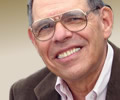Sport: Vary from normal structure in a singular spontaneous manner. This is the definition of sport as applied to biology. It can be extended to include any event that is extraordinarily different from the norm. Below are a number of musical selections that could be called sports if one were generous with the appellation. If not true sports they are different from what’s usually expected from their sources.
In 1927 when he was 21 years old, Dmitri Shostakovich and his friend conductor Nikolai Malko listened to a recording of Vincent Youmans’ ‘Tea for Two’. Malko bet Dmitri 100 rubles that he couldn’t come up with an orchestration of the song, entirely from memory, in less than an hour. Shostakovich went into the next room and returned 45 minutes later, having made his own orchestration, and duly won the bet. At least that’s the story. It’s too good not to accept. The composer put the music, now titled ‘Tahiti Trot’, into his ballet The Age of Gold. Shostakovich Tea for Two. Another example of Stravinsky’s maxim that good composers borrow while great ones steal.
IN 1938 violinist Joseph Szigeti and clarinetist Benny Goodman commissioned Béla Bartók for a trio which was called ‘Contrasts’. Goodman was famous as a jazz player, but he performed a number of “classical” pieces as well. The first movement of Contrasts is performed by Szigeti, Goodman, and Bartók . The music is immediately identifiable as Bartók.
Vladimir Horowitz was one of the last century’s great piano virtuosos. Of course, he was famous for his performances of the great bravura pieces of the 19th and early 20th centuries. But he often played his version of Sousa’s Stars and Stripes Forever as his final encore. I heard him do the encore on November 20, 1977 at Chicago’s Orchestra Hall. At this point in the eccentric pianist’s life he would only perform on a Sunday at 3pm.
Giuseppe Di Stefano exploded onto the opera world in 1946. Alas, he had burned out a decade later. His first recording session was in 1947. Among the arias he sang were two Sicilian folk songs. The 26 year old tenor’s voice was lush and beautifully produced. The songs are simple and emotionally laden even if you don’t understand a word of Sicilian. An example of a performer elevating his material. Cantu a Timuni and A la Barcillunisa.
Another instance of an artist adding to the worth of his song is Frank Sinatra’s singing of Irving Berlin’s trifle All Alone. I have a multi CD set of the late singer’s recordings which includes this song. The writer of the liner notes states that the song is so trivial that not even Sinatra can do much with it. I think he’s completely wrong, Sinatra’s rendition is brilliantly conceived and executed. His singing provides additional proof that he was one of the last century’s greatest vocalists. Noelie Jean Norman is the singer heard at the song’s end.
Eileen Farrell was best known as a dramatic soprano who could sing the big Wagner and Verdi roles. But she could also do “popular” songs that typically defeat operatic performers who attempt them. Here she sings Bernstein’s ‘Some Other Time’ from On the Town. Bernstein is at the piano and croaks out a few words of the song in his cigarette ravaged voice.







Of the great singers I’ve been privileged to interview, a surprising number were exceptional athletes who considered singing a form of athleticism. For many opera, concert, and pop-music singers—Rosa Ponselle, Giovanni Martinelli, John Charles Thomas, Grace Moore, Robert Merrill, Bing Crosby, Bob Hope, Dean Martin, Mickey Rooney, and Fred MacMurray (yes, he was a singer and saxophonist with the Gus Arnheim and George Olsen orchestras), golf was their sport of choice.
On tour in Atlanta, Rosa Ponselle took lessons from Bobby Jones and once scored a 79 at the Hillcrest Country Club in Los Angeles. “To me, the golf swing is like singing,” she told me in an interview. “The only way you can hit the ball accurately is for the muscles in your middle section, your shoulders and back, and your legs to move in just the right sequence, and without any straining or forcing. The same goes for the voice.”
Ponselle found skiing rather easy, but was outdone on the slopes at St. Moritz by Grace Moore, another multi-sport singer. Ponselle was also a good tennis player, and in London one of her frequent partners on the court was John McCormack. I would imagine that McCormack also played golf, but I don’t know to what extent nor how well he played.
Among pop-music singers, Johnny Mathis was a track-and-field star who had to choose between contending for a spot on the U.S. Olympic team and signing a recording contract with Columbia Records. And Among concert singers, the finest athlete was unquestionably Paul Robeson, who played varsity football, basketball, and baseball at Rutgers University, where he was the only African-American student and one of only three at the university. (The other two, he noted, were janitors.) Robeson’s football prowess put Rutgers on the map, and put him on the list of the top ten All-American college football players of his era.
The “Three Tenors” concerts are still in the public memory, but one of the motives of Pavarotti, Domingo, and Carreras for the first concert at the baths of Caracalla was for all three to attend the World Cup finals. All three had been soccer players, and in his athletic prime Pavarotti had been a formidable “footballer.”
I love Grace Moore singing ‘Minni the Moocher.’